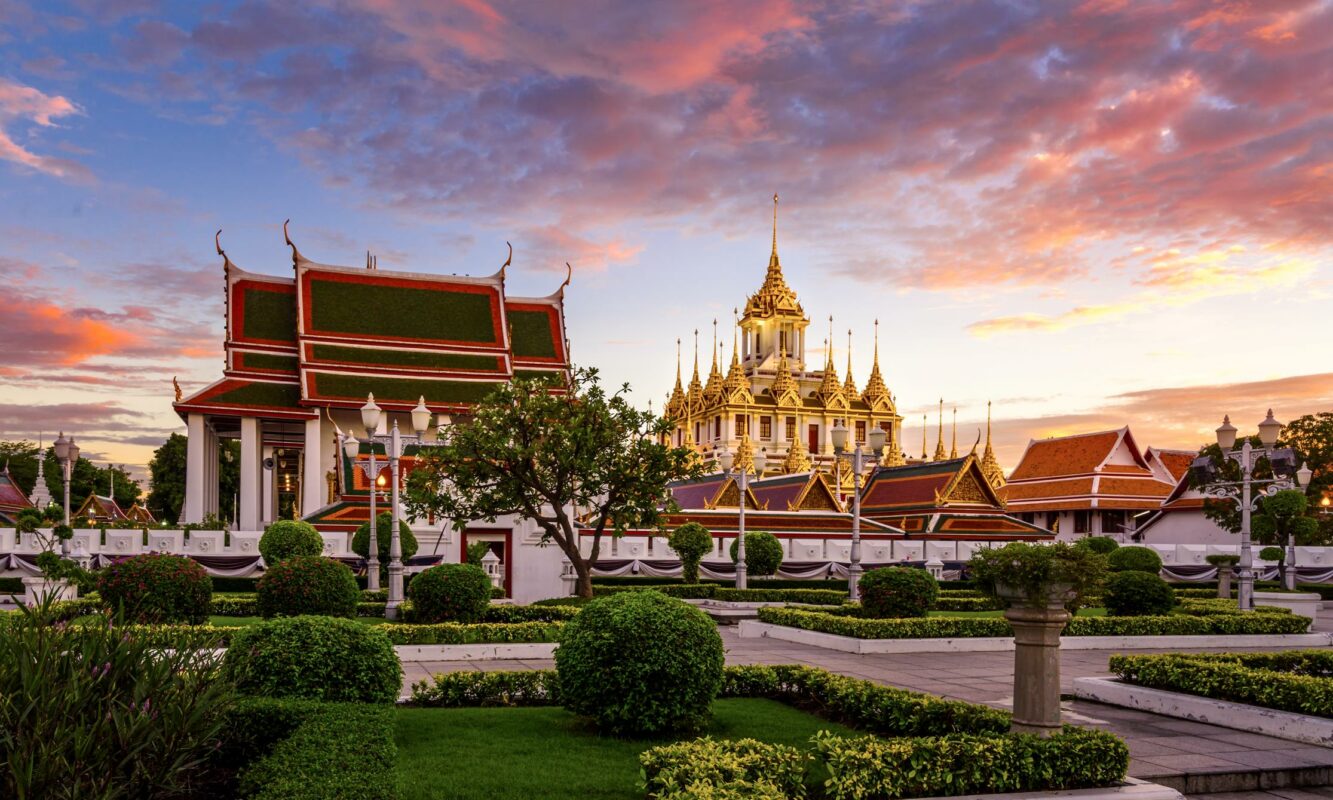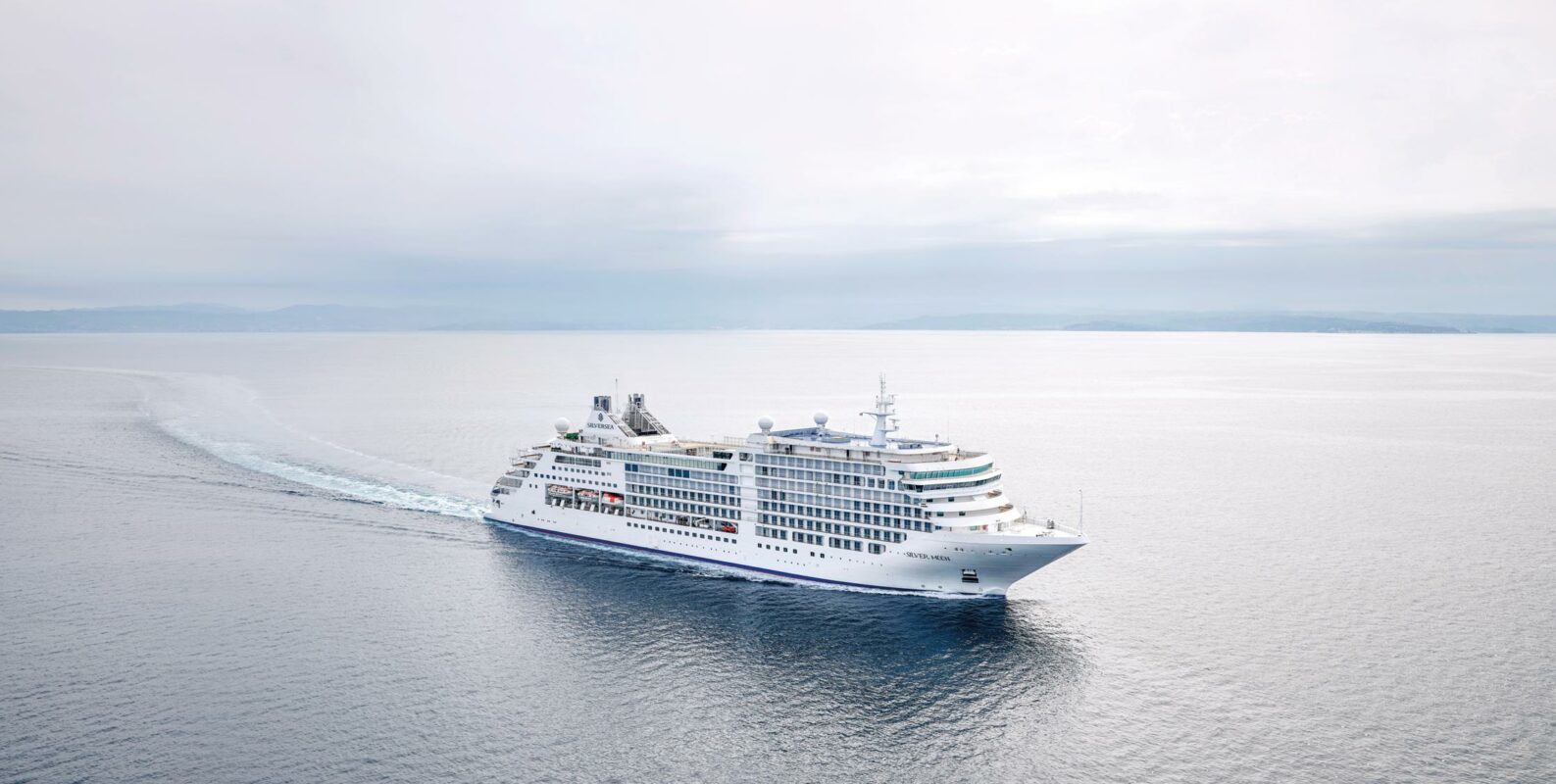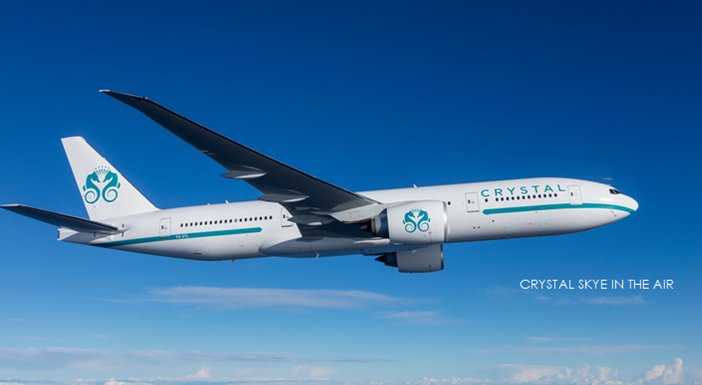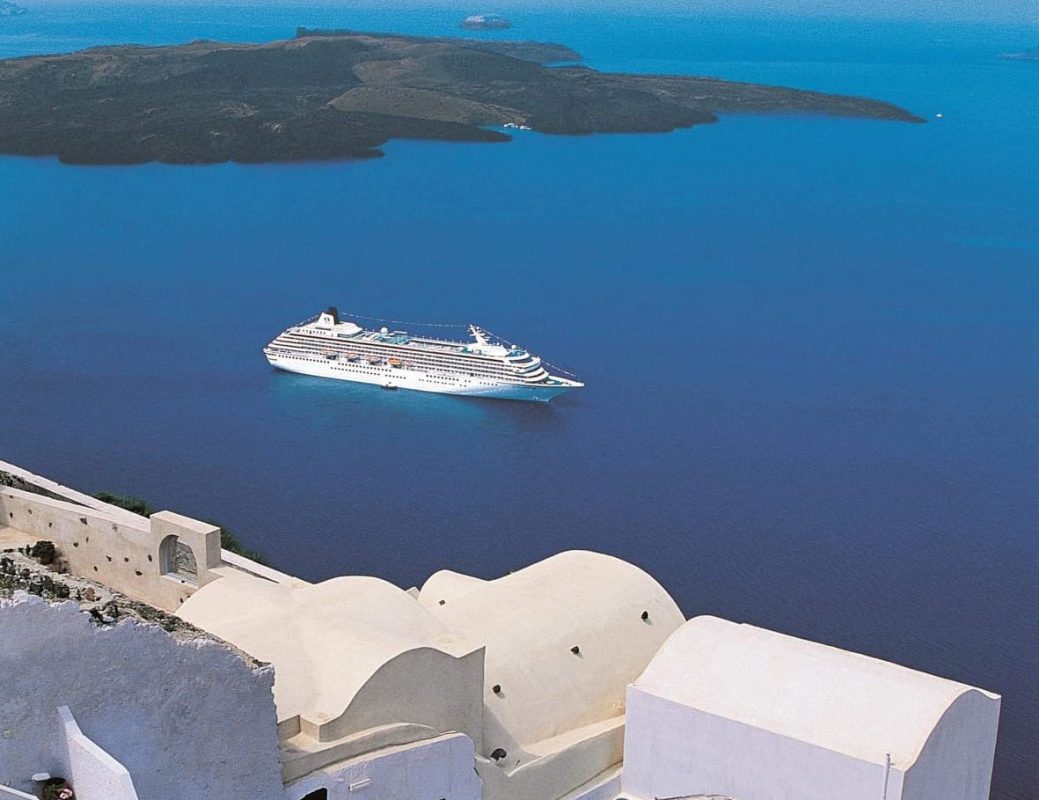Discover a new world of travel with Silver Moon, our newest all-suite, all-inclusive intimate ship.
She pushes the frontier of luxury travel, with personal butler service for every suite and cutting-edge culinary experience S.A.L.T. ( Sea And Land Taste ) that changes with every destination.
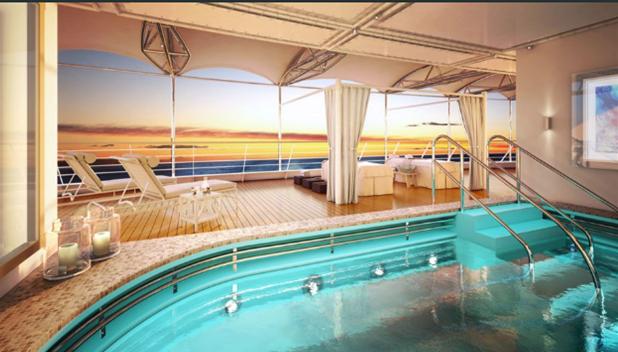
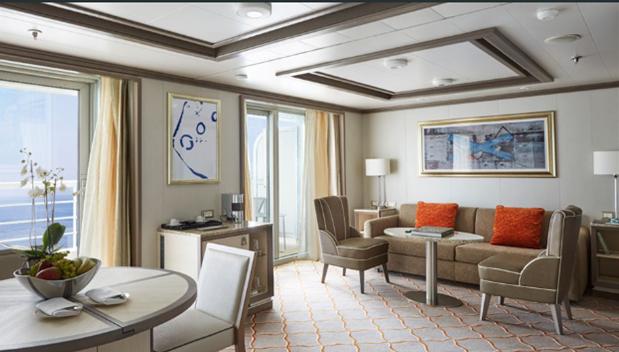
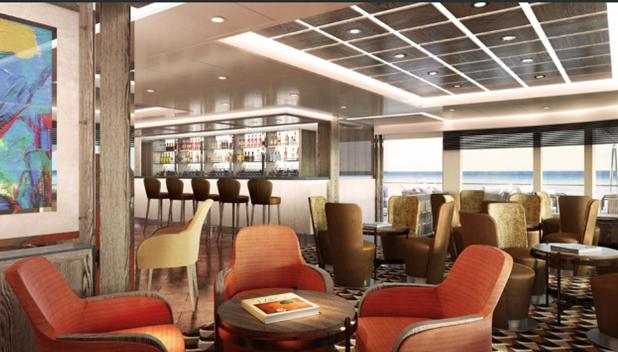
Because we could all use a little advice right now.
My happiest moments from the past year were spent in Finland, where I spent a cold, sunless week in Lapland back in November. The fresh air and breathtaking natural beauty sustained me even after the 3 p.m. sunsets, and I made it my mission to keep my blissful, outdoorsy attitude going into 2020—and then coronavirus happened. Outbreaks are stressful, and according to the CDC, they can worsen mental heath conditions to varying degrees. I’ve been keeping in touch with my family and having Zoom sessions with my therapist, but part of me wishes I could simply hop on a plane back to Finland.
Luckily for everyone struggling with the whole “getting through the day without crying” thing right now, Finland’s tourism board has shared the country’s top five tips for happiness—specifically when you’re stuck at home. And seeing how the United Nations World Happiness Report dubbed Finland the happiest country in the world for the third year in a row, we suggest you pay attention. So take a deep breath, and follow these steps for Finnish-style happiness until you can go on your next adventure.
1. Start your day with a cold shower.
You’re probably aware of the sauna culture in most Nordic countries, but Finns in particular like to add a little ice to their fire. Winter swimming is an extremely popular activity in Finland—there are even spas that offer ice swimming, complete with stylish facilities with underwater lights to lower the fear threshold. But there are many citizens who still prefer to take the plunge the old-fashioned way: jumping into a freezing lake as soon as they wake up in the morning. The idea of diving head-first into dark waters before the sun rises (if it even rises at all) sounds like an…acquired taste, but Finns swear that they get a huge rush of happiness as soon as they’re back on dry land and their circulation kicks back in. The process of your body warming up goes hand-in-hand with the production of serotonin with dopamine, a.k.a. serious mood-boosting hormones.
The easiest way to replicate this sensation at home is to take an ice-cold shower for a couple of minutes first thing in the morning. The post-shower sensations will be just like those experienced during winter swimming in Finland. You can also alternate cold and warm showers to recreate that “sauna” feeling and get your blood circulating.
2. Read, read, read.
Finns hold books close to their hearts. The United Nations named Finland the world’s most literate nation in 2016, and its citizens continue to be avid public library users. (Finland is a country of 5.5 million people, yet Finns borrow close to 68 million books a year.) One of Finland’s most popular literary icons is the Moomin, a white, hippo-like character created by Finnish writer Tove Jansson in the 1940s. The Moomins have since become part of the country’s identity—Finnair even chose Moomins to advertise their family-oriented travel services.
Moomin books can be found in every bookstore and library in Finland, and can also be ordered online. However, you can find literary happiness outside of this one series (although it’s hard to replicate that level of cuteness). Sitting down with a good book has become one of our favorite coping mechanisms during this pandemic—check out our list of the best travel books of all time, according to authors and editors. Any book on this list is more relaxing than scrolling through the news or social media—we guarantee it.
3. Visit the forest from your couch.
From the sound of gently rustling leaves to the calming effect of the color green, spending time among trees is one of the nicest things you can do for yourself. And while the term “forest bathing”—basically being present in the forest through slow movements and a focus on the senses—originated in Japan, the Finns have long believed that their souls are linked to the forest and its magical elements. Studies have proven that spending time in forests can lower cortisol (the primary stress hormone), blood pressure, and heart rates; but even if you can’t get to a grove of trees at the present moment, you can easily replicate the sensory part of the experience at home.
Visit Finland has compiled the relaxing sounds of Finnish Lapland onto an album titled “Scapes,” which you can download now on Spotify. Each of the tracks is between 7 and 8 minutes long, with sounds including singing birds in a forest, reindeer grazing in a field, and a fire crackling in a cozy cabin. To wind down after a day of work, stretch out on your sofa, close your eyes (adding a sleep mask would be even better), and take an imaginary trip to the Arctic wilderness.
4. Bake some cinnamon buns.
Another beloved tradition in Finland is the coffee break, which is much lovelier than the pre-lunch dash to Starbucks we’re used to. Finns will take time out of their day to indulge in some strong coffee paired with a sweet treat—usually korvapuusti, or cinnamon buns baked with a dash of cardamom, then topped with thick granules of pearl sugar. Practically every cafe in Helsinki bakes cinnamon buns every morning, but making them yourself can be just as satisfying. (This video has a great recipe with step-by-step instructions.) With sweet treats like this, is it any wonder Finland is the happiest country in the world?
5. Take a virtual museum tour.
Finland has a thriving contemporary art scene, embracing both experimental installations and more conventional galleries and museums. There are more than 55 art museums scattered around the country’s bigger cities (which is pretty impressive, given Finland’s sparse population). While the artwork here is fairly dynamic, much of it centers around the Finns’ close relationship with nature. And just like winter swimming or forest bathing, citizens use art to calm the mind and alleviate stress.
We certainly recommend checking out some of Finland’s coolest art museums in person one day, but in the meantime, here are some of the country’s top institutions that are currently offering virtual tours and online experiences:
- Amos Rex (Best for immersive installations and edgy architecture)
- Rovaniemi Art Museum (Best for cool sculptures and Lapland nature)
- Ateneum Art Museum (Best for classical art)
finlands-secrets-for-being-the-happiest-country-in-the-world
In our Ethical Traveler advice column, we tackle the tricky moral dilemmas and questions that arise when traveling during a pandemic.
BY MATT ORTILE
Before the pandemic, I often befriended my plane seatmates. There was the fellow Filipino flying to Manila; we had drinks together during our layover in Hong Kong. There was the family on a flight from Barcelona; as I spoke, one of them said, “Are you May’s son?” She knew my late mother from high school, and had recognized me by the cadence of my speech and its similarity to May’s.
And one summer, leaving Paris, during boarding: “Do you think anyone will sit here?” I asked him, pointing at our empty middle seat. In his French lilt, he replied, smoothly, “Do you want to?” As in all things, it begins with a smile.
There’s something special about the relationship between plane seatmates. My theory: Should we ever crash in the ocean, in the mountains, or on a remote island that’s actually three white men’s vision of purgatory, we want an ally. We sign a contract when we board a plane. We trust, in a crisis, we will care for each other.
But as flights resume in the U.S. during the COVID-19 pandemic, some passengers have broken the rules of in-flight etiquette by refusing to wear a face mask on the plane, and risked spreading the virus to others on the plane. In September, a Delta flight returned to the gate and one passenger was kicked off for not wearing a mask. The same happened with two others on another Delta flight in July. The same happened with two others on another Delta flight in July. The passengers were put on Delta’s “no-fly list,” which now has at least 270 people who refused to wear masks. Many U.S. airlines are doing the same, banning a total of about 740 people (so far) for not complying with mask protocols.
“We have a policy that everyone must wear a mask when onboard our aircraft,” Cailee Olson, media relations manager at Alaska Airlines, told me in an email. “We’re counting on both our guests and employees to be considerate of one another to wear face coverings and contribute to our constant effort to keep everyone healthy and safe.”
Wearing a mask reduces the amount of potentially contagious droplets and aerosols you breathe, speak, and sneeze into the air. Whether you’re healthy or asymptomatic, it’s a worthwhile precaution to protect those around you. Still, however carefully you plan—booking a flight with blocked middle seats, or even wearing a face shield in addition to your mask—you may end up flying with someone who disregards the safety of their neighbors. The real question: How do you ask your seatmate to put on their face mask on the plane?
“Smile with your eyes,” advises a flight attendant who spoke to me on the condition of anonymity, “and gesture to your own masked face.” They suggest behaving in good faith, as if the other passenger forgot to put on the mask currently under their chin, and mime covering your face or pulling up a scarf. If they don’t have their mask out, the flight attendant says, look at them and pat your cheeks, “like a fancy lady powdering her face.” Not only does nonverbal action prevent potential spread, but a subtle and silent interaction will hopefully make you or them feel less awkward about it.
If your seatmate still refuses to cover up, even after you’ve appealed to them, call a flight attendant to provide a mask or insist that they wear one. For example, on Alaska Airlines, Olson explained, “flight attendants are empowered to issue a final notice to any guest who repeatedly refuses to wear a mask or face covering on board our aircraft.”
Ultimately, flight attendants are backed by their company and a union; fighting one could land a passenger in jail or on the dreaded no-fly list. “Pointing people out to the FAs is perfectly reasonable,” says the flight attendant, acknowledging that it might seem embarrassing—but is likely a necessary ask.
That’s the strange thing about it—feeling like a snitch or a cop. As a non-confrontational Libra, I’d sooner get off the plane myself and catch the next flight than tell someone what to do. But we’re in a crisis. There is a social contract and we must take care of each other. By asking your plane seatmate to wear a mask, you’re looking out for their safety as well as yours.
Even if no one can see it under your mask: Begin, as in all things, with a smile.https://www.cntraveler.com/story/what-to-do-if-your-airplane-seatmate-wont-wear-a-mask
We asked medical experts for their opinions.
If you’re thinking of getting on a plane in the near future, but still concerned about the health risks, would a seat in first class buy you more protection?
That’s the question many seasoned air travelers are currently asking themselves. Even though first-class perks have been scaled back, many say the benefits—a wider seat, priority boarding, and airport lounges—allow for more social distancing and are worth the extra money or miles.
The biggest issue for many fliers in the pandemic is indeed the amount of personal space they can claim, at the airport and on the plane. A recent survey of travelers by the International Air Transport Association found that 65 percent of those polled listed the prospect of sitting next to someone who might be infected as the top concern. (Using the restroom was second.)
Especially for longer flights, the added space can be substantial. According to industry data, first-class seats on international wide-body planes like the Airbus A350 and the Boeing 787 Dreamliner offer roughly three times the space—around 1,600 square inches—than a cramped coach seat, which averages around 527 square inches. The fares reflect that disparity; data from the Airlines Reporting Corp., a clearinghouse for airlines, show that as of last year, international business- and first-class fares cost more than four times the coach fare. For domestic flights, premium fares can be double or triple the economy fare but, for that price, you get just a bit more space: 756 square inches on a typical Airbus A320 layout, according to ARC.
Some airlines are continuing to block middle seats in coach, but even then, you aren’t really getting a full six feet of distance from your seatmates. A premium seat essentially guarantees a bigger slice of the real estate, especially on airlines that keep their front cabins at less than full capacity.
Take the experience of Tobie Stanger, a magazine writer who lives outside of New York, who flew to Colorado in July on Delta and used miles to get upgraded to first class. “If you’ve got a bunch of points saved up, and you know you aren’t going to be using them, why not?” she says. With adjacent seats kept empty, the extra space in the cabin was significant, she says. While her in-flight service consisted of a bottle of water, some cookies, and a packet of wipes, she says the roomier digs were worth it.
But is this theory backed up by any medical evidence? How much added protection do you really get from flying first or business class? We asked a couple of medical experts to weigh in, and the answer was: not much.
“It really doesn’t make much difference where you sit on the plane” says Dr. Mark Gendreau, chief medical officer at Beverly and Addison Gilbert Hospitals, near Boston. “What’s most important are the precautions we are carrying out: face masks, proper hand hygiene, sanitizing surfaces,” he says. That, combined with hospital-grade HEPA air filters throughout the plane, have made it less likely the virus can be transmitted in flight. “The air carriers are doing their part disinfecting the cabin between flights, and they’ve stepped it up. The last thing they need is a rash of infected cases on their airplanes.”
In fact, he notes, one of the few documented cases of COVID-19 transmission on board a plane involved a business-class passenger who had contracted the virus, traveling from London to Hanoi on March 1 on a Vietnam Airlines flight. A report on the incident from the Centers for Disease Control found that 15 passengers on the flight were infected as a result, 12 of whom were also in business class. At the time, however, there was no mask requirement for airline passengers, and other COVID-19 measures, like temperature checks and deep cleaning of cabins had yet to take effect industrywide.
Advertisement
David Aronoff, director of the division of infectious diseases at Vanderbilt University Medical Center, also says there’s no data to support the notion of a safer first class. It does seem logical that the risk is lower when there are fewer people sharing the cabin, he says, “but it’s hard to say that it is really worth that extra amount of money.”
Health and safety aside, though, who wouldn’t want to fly in a premium cabin if they could afford it? “It’s about not having that sense of claustrophobia when you’re flying,” says Diana Hechler, president of D. Tours Travel, in Larchmont, New York.
Even though international travel has slowed, Hechler says that clients who are contacting her about planning trips abroad next year have asked about flying business class.
It’s a valid point. From check-in to boarding and deplaning, premium passengers usually face smaller lines and less commotion throughout their journey. Although some airlines have revamped boarding and deplaning protocols in all cabins to help maintain social distancing requirements, it seems most passengers would rather bank on the well-established service perks afforded in first and business classes.
“It’s not just a wider seat and more leg room,” says Hechler. “It’s more personal space at every step of the journey.”
We’re reporting on how COVID-19 impacts travel on a daily basis. https://www.cntraveler.com/story/is-flying-first-class-actually-safer-amid-the-pandemic
MV Werften received a €193m loan to complete Crystal Endeavor and keep operating until March.
The shipyard cluster expressed appreciation for the support of Mecklenburg-Vorpommern state and the federal authorities and explained why this aid was justified.
€2bn invested by Genting HK
Genting Hong Kong, the parent of MV Werften, has invested about €2bn into the shipyards and the construction, in progress, of Global Dream and Crystal Endeavor and created about 3,000 direct jobs in the state plus thousands of indirect jobs in the cruise shipbuilding supply chain and the local economies of Wismar, Rostock and Stralsund.
Over years, Genting HK has done business in Germany, building 22 cruise ships there (most at Meyer Werft); almost half the country’s output from 1996 was for cruise brands under its control. In 2016, Genting bought the yard group — and named it ‘MV’ as an homage to the state Mecklenburg-Vorpommern — to build ships for its three cruise brands since other yards were full and the earliest delivery was seven years into the future.
Genting HK honed in on the prior Nordic Yards because the first two AIDA
vessels and cruise ferries had been produced there. All the 3,000 employees of MV Werften are European Union nationals, with the majority German nationals.
One of Germany’s largest aid packages
‘GHK is an exemplary investor and fully relies on German management in the operations of MV Werften,’ MV Werften CEO Peter Fetten said. ‘We are very appreciative of the very significant investment, probably one of the largest made in Germany, and the creation of thousands of direct and indirect jobs for Germany and the EU.’
He continued: ‘MV Werften built four luxurious river ships for Crystal Cruises and they have been rated the best river ships in Europe. We are now completing the Crystal Endeavor, which will be again be the most luxurious polar class expedition yacht in the world, for Crystal Cruises.’
‘It is the impact of the COVID-19 that stopped the world’s cruise fleet, including GHK, that MV Werften has to turn to the state and federal government for support under the WSF, which had been established by the German government to assist industries impacted by COVID-19,’ added Carsten Haake, CFO, MV Werften. ‘Since 2016, GHK had fully supported the shipyard and had not withdrawn any of the invested funds from Germany.’
Taiwan sailings since July
Since the crisis, Genting Cruise Lines’ Dream Cruises restarted operations from Taiwan July 26 and recently diversified these domestic itineraries.
Cruises to resume from Singapore and Hainan, China
Yesterday Singapore announced that World Dream, built in Germany, will restart domestic cruises Nov. 6. This will be followed by Genting Dream resuming cruises from Hainan, China, in mid-November.
Two Star Cruises ships have been chartered to the Singapore government to accommodate workers who had recovered from COVID-19, without any incidents. Copyright © 2020. All rights reserved. Seatrade, a trading name of Informa Markets (UK) Limited.
Paragraph
Visit now to learn everything you ever wanted to know about Regent Seven Sea Cruises and access an exclusive offer, available for a limited time only.
Click here. https://regent-seven-seas-event.bubl.com/Asia/partner/SEA_Tours_Co_Ltd/Welcome
Planes pose a unique risk for any disease contraction, including COVID-19. By Cassie Shortsleeve
1.Wear a mask.
The CDC recommends wearing face coverings “in public settings and when around people who don’t live in your household, especially when other social distancing measures are difficult to maintain.” An airplane certainly fits the bill. “When you sit in your own seat, it might feel like personal space, but you’re still in a public space,” says Amler. “You should continue to wear a mask to help protect the airspace from infected particles.” Mask wearing can reduce the amount of virus in the airspace and—since even people who don’t know they’re sick with the infection can still expel enough virus with just exhaled breath to infect someone else—it’s a measure to keep others safe. “If everybody in an area is wearing a mask, then you’re basically keeping a space from getting contaminated with virus droplets,” says Amler.
2.Research airline policies around social distancing before booking.
It’s fair to wonder what airlines are doing to keep planes clean, keep passengers and staff safe, and keep virus risk low. After all, pre-COVID, research already suggested that sitting simply within two rows of someone with flu-like symptoms puts you at a 3.6 percent increased risk of getting sick with what they have. So how can you keep your distance on planes? Well, for now, it’ll depend on the airline you’re flying. For example, while some (American Airlines and United) continue to book middle seats, others still have them blocked. “I’m concerned about any social distance that’s less than six feet unless you’re talking about a household member,” Amler says when it comes to COVID risk. “The risk of transmission is much wider than we originally thought and the only way to protect yourself is to block exposure at every chance that you can.” We’ve compiled a complete guide to international and U.S. airlines’ coronavirus policies and looked into how airlines are changing their in-flight policies so you can compare boarding and in-flight experiences. Consider booking with an airline that matches up with your expectations and personal requirements.
3.Wash your hands.
Scrub your hands with water and any soap for at least 20 seconds to stay safe and clean, suggests the CDC. And remember: Don’t touch your eyes, nose, or mouth with unwashed hands. These are the portals into your body for viruses.
4.Pack an alcohol-based hand sanitizer.
Make sure it has at least 60 percent alcohol content, an amount that can neutralize germs.
5.Wipe down your area.
Use a disinfectant with that same threshold of alcohol content. Wipe your seat, the seatback in front of you, the tray table, armrest, seat belt, and the buttons for the fan and light overhead, suggests Amler.
6.Consider going snack-free on short flights.
Airlines like Emirates have reduced in-flight food and beverage service to personal bento boxes to limit contact between the crew and passengers. If you’re hungry, you should eat. But eating does require you to take your mask off—potentially putting others around you at risk. If you can go without a snack on a short flight, consider it, suggests Amler.
7.Be in the know.
Staying up-to-date with travel notices, hot spots, and federal, state, and local regulations regarding travel is important. If you’re flying to a domestic destination, start by checking the CDC’s considerations for travel in the U.S. and state health departments’ websites. For international travel, look to the U.S. State Department’s country-specific COVID recommendations.
8.Get the flu shot.
While researchers around the world are working to develop one, as of now, there is no vaccine to prevent the coronavirus. But it’s never too late to get a flu shot, which can protect you against the sometimes serious (and deadly) flu. The CDC recommends getting the flu shot by October, ahead of the fall flu season.
9.When in doubt, follow the four W’s.
Paragraph
To stay healthy whenever you leave home, former CDC director Dr. Tom Friedan recently tweeted to follow the “three W’s”: wear a mask, wash your hands, watch your distance. Amler adds a fourth: walk away. “Try to spend as little time as you can in situations that are close quarters,” he says. “If you’re crowded in, even for a short time, there’s a chance you can get exposed.” Keep this in mind in gate areas, when using airport transportation, and in common areas on planes.


